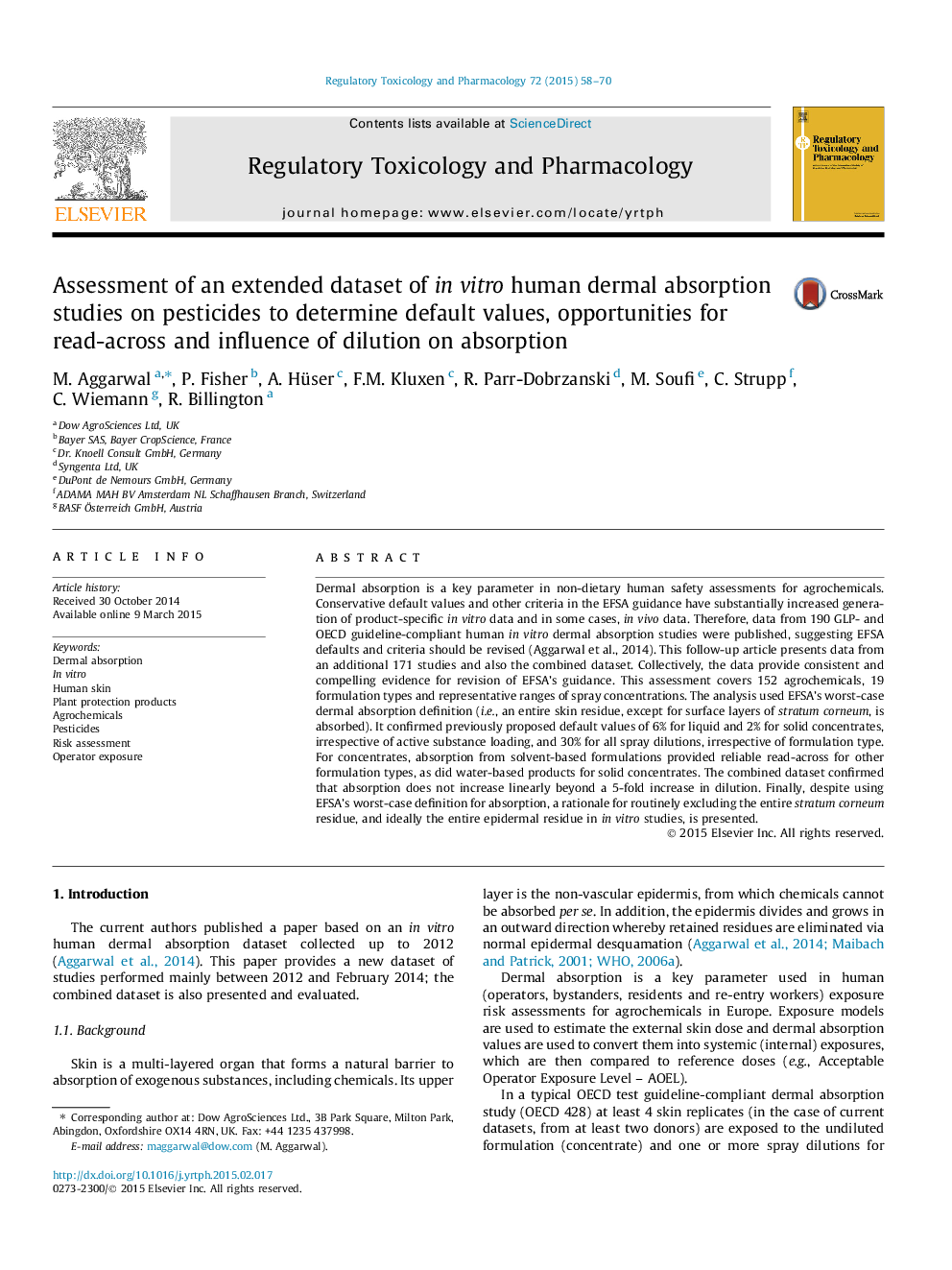| Article ID | Journal | Published Year | Pages | File Type |
|---|---|---|---|---|
| 5856541 | Regulatory Toxicology and Pharmacology | 2015 | 13 Pages |
Abstract
Dermal absorption is a key parameter in non-dietary human safety assessments for agrochemicals. Conservative default values and other criteria in the EFSA guidance have substantially increased generation of product-specific in vitro data and in some cases, in vivo data. Therefore, data from 190 GLP- and OECD guideline-compliant human in vitro dermal absorption studies were published, suggesting EFSA defaults and criteria should be revised (Aggarwal et al., 2014). This follow-up article presents data from an additional 171 studies and also the combined dataset. Collectively, the data provide consistent and compelling evidence for revision of EFSA's guidance. This assessment covers 152 agrochemicals, 19 formulation types and representative ranges of spray concentrations. The analysis used EFSA's worst-case dermal absorption definition (i.e., an entire skin residue, except for surface layers of stratum corneum, is absorbed). It confirmed previously proposed default values of 6% for liquid and 2% for solid concentrates, irrespective of active substance loading, and 30% for all spray dilutions, irrespective of formulation type. For concentrates, absorption from solvent-based formulations provided reliable read-across for other formulation types, as did water-based products for solid concentrates. The combined dataset confirmed that absorption does not increase linearly beyond a 5-fold increase in dilution. Finally, despite using EFSA's worst-case definition for absorption, a rationale for routinely excluding the entire stratum corneum residue, and ideally the entire epidermal residue in in vitro studies, is presented.
Keywords
Related Topics
Life Sciences
Environmental Science
Health, Toxicology and Mutagenesis
Authors
M. Aggarwal, P. Fisher, A. Hüser, F.M. Kluxen, R. Parr-Dobrzanski, M. Soufi, C. Strupp, C. Wiemann, R. Billington,
